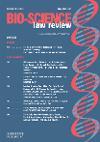Bio-Science Law Review - Volume 19 - Issue 5

Article
THE ROLE OF PATENTS IN PROTECTING INVESTMENTS IN mRNA TECHNOLOGY
SUZY MADAR, VICKY ZHANG AND DAMIEN MACRAE
King & Wood Mallesons, Sydney
Understanding about the role of mRNA in carrying genetic information from cellular DNA to the cell’s protein-making machinery crystalised in the 1960s. Sixty years on, RNA technology helped curb a global pandemic and is now being used to develop personalised medicine and cancer treatments. This article explores the current state of mRNA technology, the patent disputes that have followed and how to protect investment in this revolutionary technology.
Case Comments
UK SUPREME COURT RULES THAT AN AI SYSTEM CANNOT BE AN INVENTOR OF A PATENT: IMPLICATIONS OF THE THALER v COMPTROLLER DECISION FOR THE LIFE SCIENCES INDUSTRY
JONATHAN CHAN
Associate, Pinsent Masons LLP, London
Should the definition of ‘inventor’ be broadened to include AI systems? The current state of the UK patent system following the Thaler Supreme Court decision suggests that the development of AI may uncover gaps in the law which may need to be considered if parties are to continue to innovate.
THE FIRST UPC DECISION: THE SANOFI V AMGEN SAGA CONTINUES
DEBORAH HART
Associate, Beck Greener LLP, London
The first revocation decision from the UPC Central Division in Munich suggests that while this court takes some aspects of EPO case law into consideration, it is not afraid to take a different approach and make its own case law. This decision shows that description is important when construing claims, which could lead to a claim being given a broader or narrower scope in UPC cases as opposed to the EPO.
BATTING IT OUT IN PARIS 2024: THE PARIS CENTRAL DIVISION OF THE UPC ISSUES ITS FIRST REVOCATION DECISION EDWARDS LIFE SCIENCES CORPORATION V MERIL LIFE SCEINCES PVT AND MERIL GmbH
JOHN BRUNNER AND ALEXANDRA DREWE
Carpmaels & Ransford LLP, London
The first revocation decision issued by the Paris Central Division of the UPC offers insights into the UPC’s approach to the ‘same party’ and thus parties’ filing strategies for actions before the UPC. It also reinforces important requirements for filing requests for amendments during the revocation proceedings.
NOVARTIS/PHARMATHEN DECISION CONFIRMED ON APPEAL
JAAP BREMER AND MAURITS TOL
BarentsKrans, The Hague and Amsterdam, Netherlands
When a patent infringement injunction is issued, it is important to ensure that everything which may be an infringing act is completely discontinued, including any material regarding the infringing products that remains on third-party websites.
THE PATENTABILITY OF MUSHROOMS – A CASE NOTE
JOCELYN BOSSE
School of Law, Queen’s University Belfast
MICHAEL A KOCK
dr.kock consulting, Basel, Switzerland
The Hague Local Division of the UPC has ruled that a hybrid mushroom is not excluded from patentability under Article 53(b) EPC, as mushrooms are technically not plants but fungi. This comment discusses whether this view appropriately considers the legal definition of plant varieties used in G 1/98 and plant variety protection laws.
THE CABILLY ANITIBODY MANUFACTURING PATENTS: THE GIFT THAT KEEPS ON GIVING (EVEN AFTER 41 YEARS)
ADRIAN TOUTOUNGI AND CHARLIE ADAMS
Taylor Wessing LLP, London
When does the royalty payment obligation on a licensed product actually accrue? Best practice is to address this issue expressly in the licence agreement, but this is often not done, as two cases currently before the California courts reveal.
